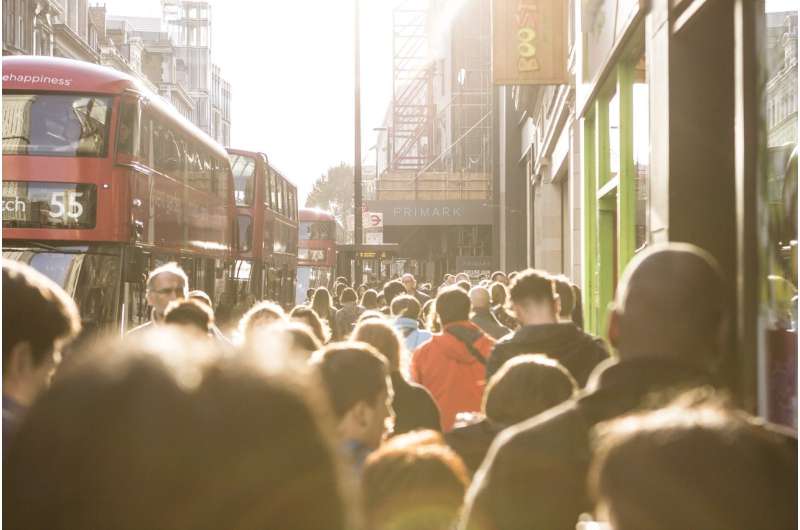Pile-ups in protein transport

Anyone who has ever tried to find a way through a crowded pedestrian zone has—literally—run into the problem: While some people choose to weave their way through the gaps, others stick to the straight and narrow, and collisions are only a matter of time. Something very similar can happen during active protein transport in cells when molecular motors with different modes of locomotion share the same multilane highway (i.e. protein filament). Theoretical analyses carried out by LMU physicists led by Professor Erwin Frey, and now published in the journal Physical Review X, show how this comes to pass. The authors describe a newly developed model that captures the collective behavior of two types of motors and provides insight into the complex phenomena that can result.
Biological cells are traversed by networks of fibrous protein polymers, which together make up the cytoskeleton. These structures serve as highways for the intracellular transport of protein cargoes, which are attached to molecular motor proteins that walk along the filaments, stepping from one subunit to the next. This process is vital for cell function. However, different motor proteins move along in different ways. Some follow helical trajectories, winding their way around the cylindrical filament. Others advance in a straight line. "The collective motions of a combination of such motors had not been modeled before," says Emanuel Reithmann, a doctoral student in Frey's group and joint first author of the paper together with Patrick Wilke.
Frey's team developed a theoretical model for the behavior of two types of particles that differ in their modes of motion. The filament itself is modeled as a two-dimensional cylindrical lattice on which particles hop from one node to the next. One particle species follows a straight course, i.e. remains in the same lane throughout, while the other switches lanes in a biased manner, and effectively traces out a spiral on the filament. Simulations based on the model revealed that, under these conditions, the two particle species hinder one another more than previously thought.
As a result of their differing trajectories, the precise distribution of the particles within the lattice has a critical effect on subsequent developments. As the two motor species have fixed modes of movement, the range of positions open to each is intrinsically restricted, and is further diminished by the disposition of the others at any instant. Hence, a given position may be accessed from more directions than are open to the particle that currently occupies it. "Therefore, it is possible for a single particle to block the motions of several others, even though the lattice may be relatively sparsely occupied," says Frey. "This effect gives rise to a cascade of surprising phenomena, including the emergence of patterned distributions of particles that had not been observed in previous models."
More information: Patrick Wilke et al, Two-Species Active Transport along Cylindrical Biofilaments is Limited by Emergent Topological Hindrance, Physical Review X (2018). DOI: 10.1103/PhysRevX.8.031063
Journal information: Physical Review X
Provided by Ludwig Maximilian University of Munich


















